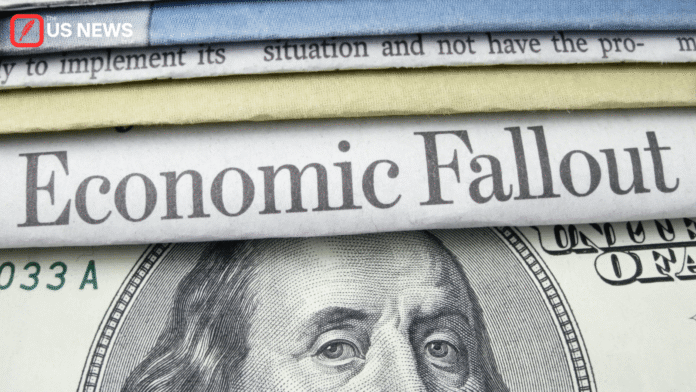Tariffs and the Small Business Squeeze
Donald Trump’s tariff-driven trade policies, once hailed by supporters as a way to revive American manufacturing, are now creating economic strain for thousands of small businesses across the country. From boutique retailers to family-run manufacturing shops, owners are reporting higher costs, slimmer margins, and uncertainty about the future.
Case Study 1: Retailers and Rising Prices
For small retailers, tariffs on imported goods have directly translated into increased wholesale costs.
- Case in Point — A family-owned toy shop in Ohio:
Owner Linda Perez says her costs for imported children’s toys rose by nearly 18% in the last year, forcing her to raise prices. “Parents notice the difference,” she said. “Sales dipped because families can’t stretch budgets any further.”
According to the National Retail Federation, small retailers have been among the hardest hit, with some reporting inventory reductions of up to 25% due to tariff-related expenses.
Case Study 2: Manufacturing and Supply Chain Strain
Small manufacturers are also feeling the pinch.
- Case in Point — A metal fabrication shop in Michigan:
Owner David McConnell, whose business supplies automotive parts, said tariffs on imported steel increased his costs by nearly 22%. “We can’t compete with larger manufacturers who can absorb or bypass the added costs. For a small shop like mine, every extra dollar counts.”
Industry data from the Institute for Supply Management shows that tariff-related price increases have slowed output among small U.S. manufacturers, with many cutting back on staff hours or delaying expansion projects.
Economic Data Snapshot
- U.S. import tariffs averaged 19% across key product categories in 2025, compared with 6% in 2017.
- The Small Business Administration (SBA) reports that over 40% of small businesses in manufacturing and retail have seen a decline in profitability tied to tariff-related costs.
- Consumer spending in sectors most affected by tariffs, such as household goods and electronics, has dropped 4.6% year-over-year, putting further strain on smaller firms.
Owner Testimonials — Frustration and Resilience
Small business owners across industries are voicing frustration over the long-term impact of tariffs:
- Restaurant supplier in California: “Every item we import — from cookware to packaging — costs more. Either we pass it to customers or take the hit ourselves.”
- Clothing retailer in Texas: “My profit margin shrank by 30%. I’ve laid off two employees. The tariffs might help some big manufacturers, but for us, it’s survival mode.”
Despite challenges, some owners are finding ways to adapt — shifting to domestic suppliers, renegotiating contracts, or cutting back on nonessential expenses. Still, these adjustments often come at the cost of growth.
Political and Economic Divide
Economists remain divided on whether Trump’s tariffs are strengthening or weakening the U.S. economy.
- Supporters argue tariffs protect U.S. jobs and reduce reliance on foreign supply chains.
- Critics counter that small businesses, which form the backbone of local economies, lack the resources to weather sustained increases in costs.
Dr. Allison Greene, an economist at Georgetown University, noted: “Large corporations can absorb or redirect supply chains, but small businesses don’t have that flexibility. They’re the collateral damage in trade wars.”
The Bigger Picture
The tariff debate highlights a broader economic question: Can policies designed to shield U.S. industries truly succeed if small businesses — employing nearly half of the American workforce — are disproportionately harmed?
For many entrepreneurs, the answer feels increasingly bleak. As tariffs continue, the story of small business resilience may shift from adaptation to attrition.
Conclusion — Tariffs as a Test of Survival
Trump’s tariffs, designed to protect American industries, are reshaping the small business landscape in unintended ways. From rising import costs to supply chain disruptions, entrepreneurs are forced to make tough choices just to stay afloat.
Whether history views these policies as protectionist safeguards or economic burdens may depend less on Wall Street and more on the survival stories of Main Street.




